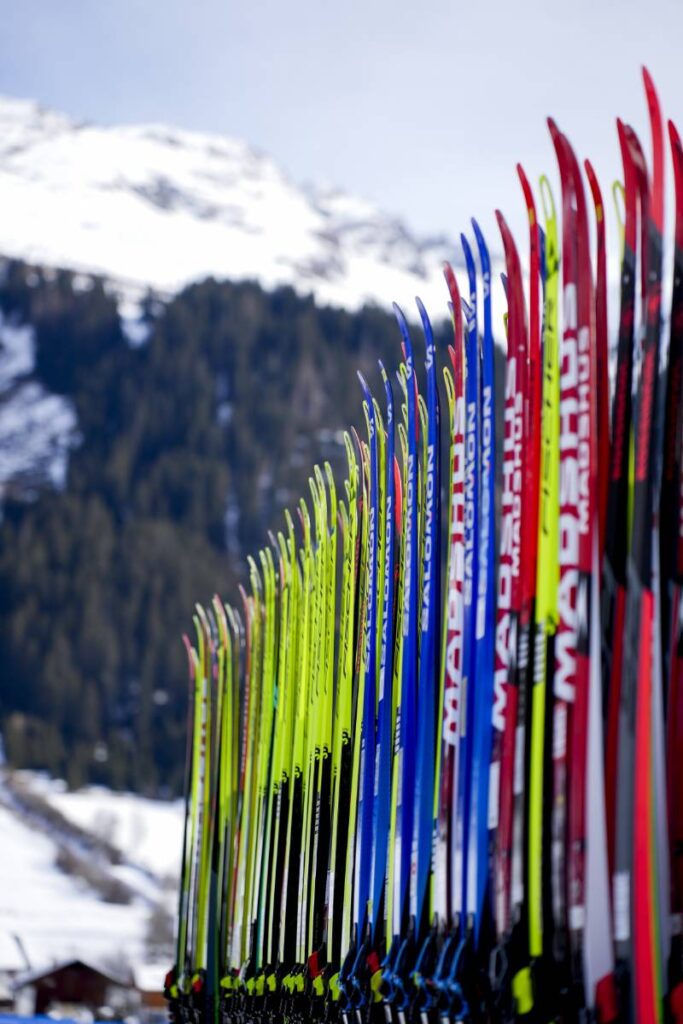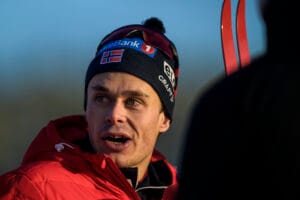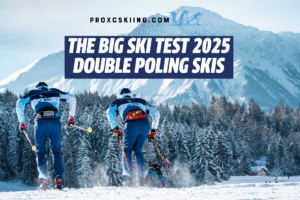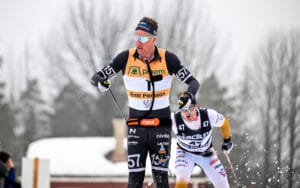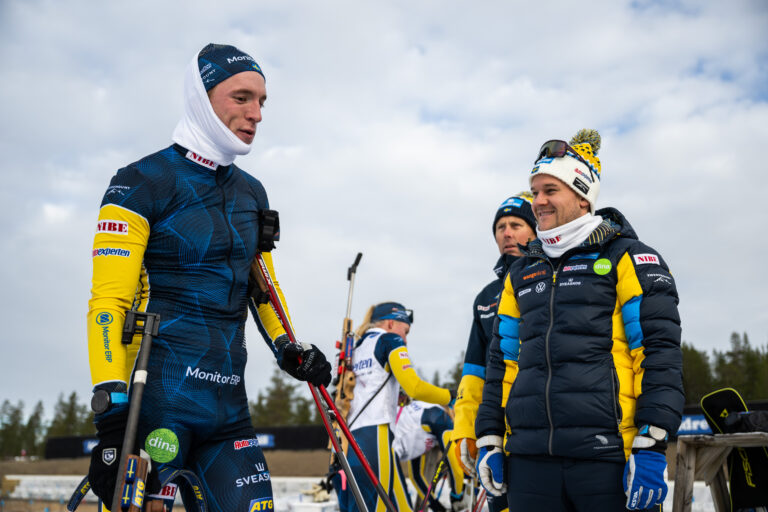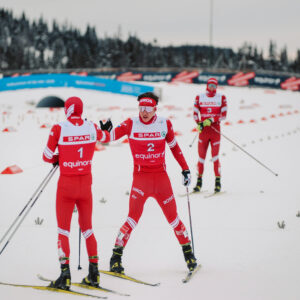How to choose cross-country skis and the right ski length
The winter season is approaching, and you’re thinking of buying new skis? Not sure what type of cross-country skis would suit you best or how long they should be? Are you a beginner, a recreational skier, a fitness skier, or a racer? This article will help you navigate your purchase and make the right choice.
Here, we present different types of cross-country skis, and based on your physical ability, you can decide which ones fit you best.
Waxless skis
Many recreational skiers often choose so-called no-wax skis — skis that don’t require grip wax. These are skis with scales or mohair skins (the so-called skin skis). Both types work well in most snow conditions except on icy tracks, and skiers don’t have to worry about incorrect waxing. A typical feature, especially of scaled skis, is slower downhill speed — something most touring skiers actually appreciate.
A common misconception is that “maintenance-free” skis require no care at all. While you don’t need to apply grip wax, the glide zones still require maintenance just like any other skis. Occasionally, wax (paraffin) the glide zones in front of and behind the kick section. Skip the kick zone for all classic skis — even for skins or scaled skis. Scales need no treatment, while skins should be sprayed with a special anti-icing spray before skiing.
Also Read: The Big Ski Test 2025 – Skin Skis

Universal skis
Some skiers want to ski both classic and skate techniques but don’t want to invest in two separate setups. They choose combi skis — a hybrid between classic and skate in both length and stiffness. As with most “universal” gear, they’re neither excellent nor terrible — just average.
When skating, softer skis make it harder to maintain balance and glide, while for classic skiing, they can be too stiff, making it difficult to get proper grip. The same applies to combi boots: they are too stiff for classic and too soft for skating.
Backcountry skis
For those who love exploring off-track in open terrain, backcountry (BC) skis are ideal. They’re wider than regular skis — too wide for groomed tracks — and their large surface area provides better flotation in deep snow. They also feature steel edges for grip on icy surfaces, but are heavier. BC skis should be about 10–15 cm longer than your body height.
Choose skis based on your fitness level
To make orientation easier, skiers can be divided into three groups according to skill and performance:
1) Recreational/touring skiers
Most people ski for relaxation — enjoying nature, family outings, and social experiences. Technical mastery isn’t the goal, so softer skis are better. They make it easier to kick and are slower downhill, which is safer.
If you’re choosing classic skis (waxed, skin, or scaled), the optimal stiffness and skier weight are usually marked on the ski label. Follow manufacturer recommendations — too stiff and you’ll slip; too soft and they’ll drag.
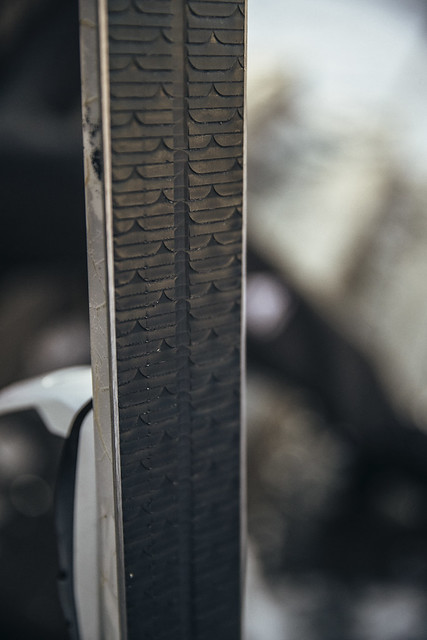
Touring ski length:
- Classic: 15–25 cm longer than your height
- Skating: 5–10 cm longer
- Beginners should opt for slightly shorter skis to avoid stepping on tails.
2) Sport/fitness skiers
Fitness-oriented skiers train regularly for health, shape, or stress relief and appreciate good glide with minimal effort.
If the budget allows, consider investing in sports or racing models. They have higher-quality bases and better glide, allowing you to ski faster and farther with less effort.
Some think race skis are only for pros — not true. Race skis are available in various stiffness options to accommodate different body weights. Heavier skiers won’t struggle to find classic or skate race models that suit them.
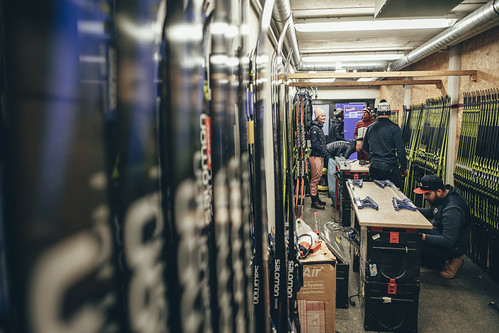
Ski length for sport skiers:
- Classic: 20–30 cm longer than height
- Skating: 5–15 cm longer
Avoid combi skis and scaled skis; skin skis are a better choice. Manufacturers offer both sport and race versions with different base qualities. Choose based on your weight sticker — if you’re technically strong, you can go for skis meant for someone 5 kg heavier.
Adjustable bindings are helpful — by moving the balance point forward or backward, you can fine-tune grip and glide.
3) Racers
No serious racer would use less than a race model. Elite skiers select several pairs for different snow conditions, but hobby racers typically buy a pair with a universal base suited for typical Central European conditions, around -5°C to +5°C. These perform well most days but might struggle in extreme cold or warm, coarse snow.
“Combi” and “scaled” skis are out of the question for racers. Skin skis may work for training or mixed-condition races, but aren’t optimal for competition — they can’t match the glide of perfectly waxed classic skis or double-poling setups.
A few years ago, before skin skis became popular, zero skis (with micro-contact kick zones) were used in the World Cup. They’re perfect for fresh, wet snow, but very specific — not worth buying for occasional skiers. They also need anti-icing spray like skins.

Ski length for racers:
- Classic: 25–30 cm longer than height
- Skating: 10–15 cm longer
- Longer skis can be faster, but only if you can handle them technically.
Also Read: The Big Ski Test 2025 – Double poling skis
Are you interested in training for long-distance, traditional cross-country skiing and biathlon? Click HERE and read more about it.
